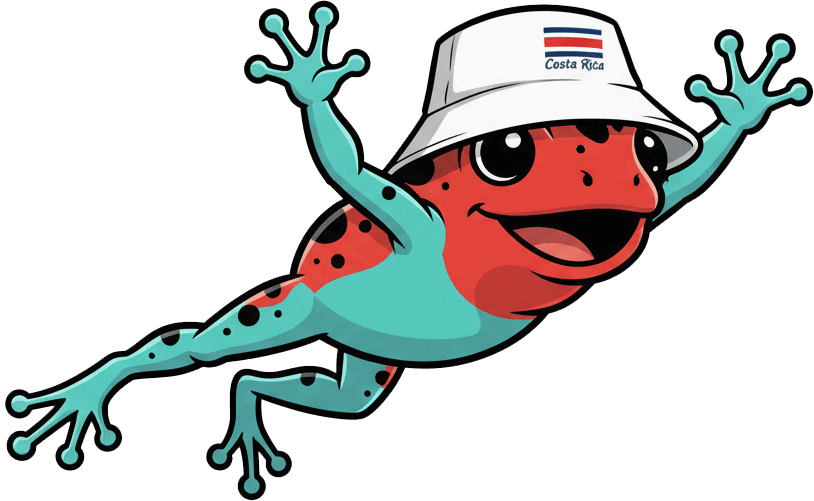Understanding what the prison system in Costa Rica looks like might not be at the top of every traveler’s list, but for many U.S. visitors and expats, it’s important to know how the country handles law enforcement and incarceration. Whether it’s out of curiosity, for legal awareness, or because you want to understand the social realities of the country you’re visiting, Costa Rica’s prisons reveal both the challenges and the efforts being made toward reform. Let’s see what this is about.
Overview of the Costa Rican Prison System
Costa Rica has a well-established legal framework that governs its penitentiary system. The Ministry of Justice and Peace oversees the administration of prisons, ensuring that human rights are respected while also attempting to maintain order inside facilities. The Costa Rican Penal Code and Code of Criminal Procedure form the foundation of how sentences are applied and how detainees are treated.
Like many Latin American nations, Costa Rica has struggled with overcrowding, insufficient medical care, and limited rehabilitation opportunities. Despite these issues, the government has introduced reforms to expand alternatives to prison, including probation and community service.
Key Laws and Reforms
Costa Rica considers torture and cruel treatment serious crimes. In fact, since 2020, torture is punishable by up to 15 years in prison. This reflects a larger shift toward protecting the rights of inmates, even in a system under strain.
Recent reforms have emphasized alternatives to incarceration. Community service, probation, and rehabilitation programs are increasingly used for non-violent offenders. These changes have helped reduce the prison population in certain areas, although facilities remain overcrowded.
Snapshot of Legal Framework
| Aspect | Details |
|---|---|
| Governing laws | Costa Rican Penal Code, Code of Criminal Procedure |
| Oversight | Ministry of Justice and Peace |
| Reforms | Alternatives to prison (probation, community service) |
| Human rights | Ban on torture, legal aid, access to family visits |
Who Ends Up in Costa Rican Prisons?
Costa Rica’s prisons house a diverse population, not only Costa Ricans but also a significant number of foreigners. U.S. citizens, Nicaraguans, Panamanians, Canadians, and Europeans make up a notable portion of the inmate population.
Foreign Nationals in Costa Rican Prisons
| Nationality | Estimated Share |
|---|---|
| United States | 25% |
| Nicaragua | 20% |
| Panama | 12% |
| Canada | 8% |
| Spain | 7% |
| Mexico | 6% |
| Germany | 4% |
| Other | 18% |
The presence of so many foreign nationals means that Costa Rican authorities coordinate with consular officers to ensure basic rights are respected. This includes translation services, cultural sensitivity training for prison staff, and facilitating contact with families abroad.
Conditions Inside the Prisons
The biggest challenge for Costa Rica’s prison system is overcrowding. Facilities operate at more than 120% capacity, which strains resources and creates health and safety risks.
Examples of Overcrowding
| Facility | Designed Capacity | Current Population |
|---|---|---|
| La Reforma | 2,800 | 6,500 |
| Gerardo Rodríguez Echeverría (“El Virilla”) | 704 | 1,252 |
| Vilma Curling Rivera (Women’s Prison) | 320 | 800 |
Cells often hold far more people than intended, and in some cases, there may be only one toilet for every 100 inmates. These conditions raise concerns for human rights organizations, which continue to pressure the government for improvements.
Daily Life
- Inmates receive basic necessities: food, clothing, and limited hygiene supplies.
- Educational programs are available, including literacy courses and even computer programming.
- Vocational workshops help inmates learn trades like carpentry and agriculture.
- Psychological and medical services exist but are limited, often stretched thin by the high inmate population.
Rehabilitation and Reintegration Efforts
Despite the overcrowding crisis, Costa Rica prioritizes rehabilitation as a way to reduce repeat offenses. Programs are designed to help inmates return to society with useful skills and stronger support networks.
Rehabilitation Initiatives
- Vocational training: Carpentry, cooking, and IT skills (including programming and computer literacy).
- Education: Literacy programs, high school completion, and in some cases higher education.
- Therapeutic support: Limited psychological counseling and group therapy for addiction.
- Family connections: Regular visitation rights, with special provisions for international families.
These programs align with Costa Rica’s broader social policies, which often focus on education and rehabilitation rather than punishment alone.
Visiting Someone in a Costa Rican Prison
For U.S. citizens with friends or relatives incarcerated in Costa Rica, knowing the visitation rules is crucial. Visits require a valid passport or national ID, and all visitors must pass security screenings.
Visiting Guidelines
- Schedules: Family visits typically once per week; foreign visitors may get extended hours.
- Requirements: Must arrive sober, appropriately dressed, and with valid ID.
- Legal access: Up to two lawyers may visit per inmate between Monday and Saturday, during working hours.
These visits are seen as vital for inmate morale and reintegration.
Why This Matters for Tourists and Expats
For most tourists, Costa Rica is synonymous with beaches, rainforests, and adventure sports. However, understanding the challenges within its prison system offers perspective on the country’s broader social issues. U.S. citizens, especially those considering moving to Costa Rica or staying long-term, should be aware of how the legal system works.
Drug-related offenses, for instance, are taken very seriously and can lead to lengthy prison terms. Even small infractions that may be treated lightly in the U.S. can have serious consequences in Costa Rica.
Tips for Staying Out of Trouble
- Avoid carrying or using illegal substances, even in small amounts.
- Always carry identification to avoid unnecessary confrontations with authorities.
- Respect local laws and customs, especially around alcohol, driving, and public conduct.
- If detained, request to contact the U.S. Embassy immediately.
The Bigger Picture
Costa Rica’s prison system is both a reflection of its challenges and its values. On the one hand, overcrowding and poor conditions highlight the strain on resources. On the other, reforms and rehabilitation programs reflect the country’s commitment to human rights and reintegration. For U.S. travelers and expats, it’s a reminder of the importance of respecting local laws while appreciating the complexities of Costa Rican society.
If you’re planning a visit or thinking about living in Costa Rica, staying informed is essential. Beyond its beautiful landscapes and welcoming culture, Costa Rica faces real challenges that shape daily life. To keep up with news, insights, and practical guides about the country, make sure to follow our Explore Costa Rica platform. Stay connected, stay informed, and enjoy Costa Rica responsibly.


